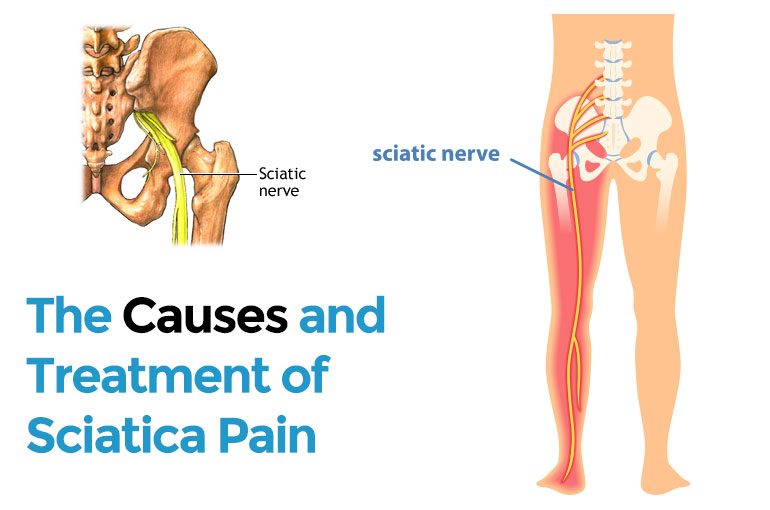
Up to forty percent of the world's population suffers from sciatica, making it one of the most widespread causes of nerve pain. Rather than being a disorder of its own, the discomfort is actually a sign of various other lower back and spinal conditions. The condition has gained attention because Grammy-winning singer Adele revealed to fans that she has had sciatica and other back problems since she was a teenager. The 34-year-old performer sought an explanation for why she has recently started "wobbling" on stage.The sciatic nerve, which is the longest and thickest nerve in your body, becomes inflamed or irritated. The nerve starts in your buttock region and travels down your legs before branching into your foot and toes. The nerve really starts as five spinal nerve roots. A wide range of medical issues can lead to sciatica. It is one among the more prevalent signs and symptoms of lower back conditions, including situations where a disk presses against a spinal nerve. From one individual to the next, pain and symptoms might differ greatly. There could be excruciating pain that travels down one or both legs. There could be a throbbing ache that starts in the buttocks and extends to the knee and ankle. Many various positions can cause discomfort, but for some people, standing with more weight on one side than the other might trigger it. Additionally, some patients report having tingling and numbness in their toes, foot, and legs.
Sciatica is associated with numerous risk factors, including:
Sciatica treatment
Sciatica is a sign of other issues, which is an essential fact to keep in mind. Therefore, attempting self-diagnosis and therapy may be detrimental. Finding the cause of the issue is one of the first objectives of treatment. The answer to that question can help determine treatment.
Sciatica can often be treated at home with ice/cold packs, mild stretches, and over-the-counter painkillers for swelling, discomfort, and inflammation. However, waiting two months before seeking medical attention can significantly delay recovery time. Due to this reason booking an instant appointment with the orthopaedic surgeon in baner for relief is recommended
Treatment options include:
> Physical therapy: Your therapist will work with you on a range of potential solutions. "Directional preferences" may be utilized to find postures that reduce pain and other symptoms if disk compression is to blame. To prevent an imbalance that results in muscular tension, you can utilize stretches and exercises to improve the stability of your core. Another approach is "dry needling," in which muscle trigger points are reduced by inserting tiny, flexible needles into the muscle belly. This can assist lower muscular tension.
> The prescription medications: More stronger medications can aid in the battle against pain, inflammation, and muscle spasms that may be causing your sciatica.
> Spinal injections: Steroids may decrease the discomfort and swelling near the nerves. These frequently offer relief for three months or longer.
> Surgery: Different surgical techniques could be offered if other therapies are unsuccessful in relieving the symptoms.
Does it last forever?
Thankfully, sciatica is usually curable without surgery. The majority of patients (80% to 90%) can overcome it with the help of physical therapy and medicines. Younger individuals often recover fully in one to two months; elderly patients typically take longer to do so.
The illness unfortunately has an 80% recurrence rate. You must thus continue practicing good posture, stretches, and exercises even after a sciatica episode has passed. The orthopedic doctor in baner of DR. SUMITZ clinic can assist you in creating a daily regimen at home to reduce the chances of a flare-up.
You will also learn to recognize early warning signs that can help you avoid a debilitating episode. For instance, you can have stiffness in your buttocks muscles after a long day spent in amusement parks, which could cause more inflammation. You'll be able to recognize when it's appropriate to stretch more to assist those muscles to relax.
orthopedic clinic in Pune and physiotherapy clinic in pune – DR. SUMITZ comes in the list of “highly search clinic in Pune and Baner” for physiotherapy and orthopedics.